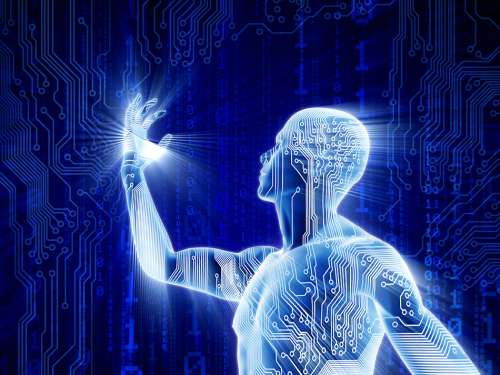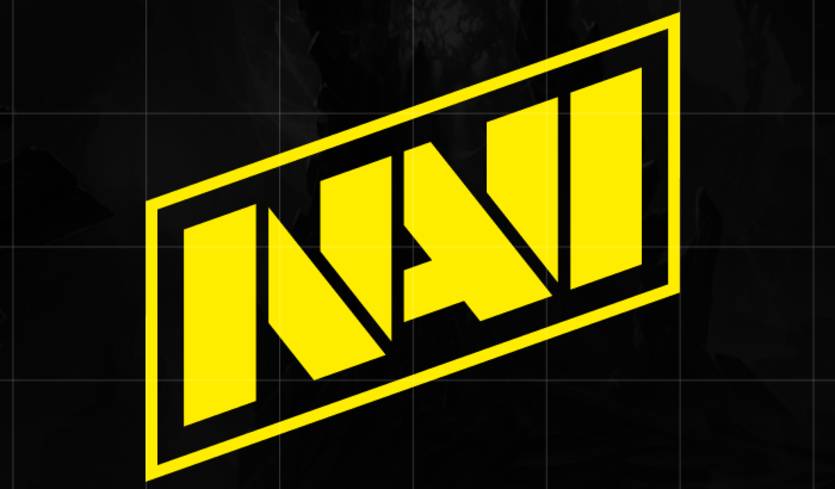 Google is one of the absolute leaders in the field of information technology. Therefore, it is not surprising that at the moment the company's specialists are actively working on creating their own version of artificial intelligence. Most of the information about this development is strictly classified. However, some features have already become publicly available. Let us recall that Google's artificial intelligence learns to think with the help of old computer games. In 2014, Google invested half a billion dollars in the young company DeepMind, which has become famous for its developments, to develop its own electronic mind. It is not yet clear how the development will end, but it is reliably known that the existing artificial intelligence has learned to beat professional gamers in many games. And, most importantly, it has learned to do this itself.
No less interesting development is being carried out by Microsoft. However, the "deep learning" artificial intelligence training system is not an exclusive development of the company. Rather, it is a set of methods for creating artificial intelligence projects. The system is widely used by many large companies. It is aimed at developing the ability of the computer mind to understand the meaning of what it sees and what is happening. In this direction, Microsoft has achieved phenomenal results. Their artificial intelligence can already recognize images in photographs better than a living person. Thus, the electronic mind from Microsoft makes mistakes in 4.94% of cases, and a person - in 5.1%.
The principles of the "deep learning" system were used to create the intelligent search Clarifai. This is an unusual project to create artificial intelligence capable of viewing videos and recognizing visual images and events in them in real time. Such a system can be used to search for a video on a hosting site or a photo in a large archive. It can also automate viewing recordings from surveillance cameras. In general, a machine that can accurately understand what is happening in a photo or video and correctly describe it will find unusually wide application.
Modern artificial intelligence can already successfully surpass humans in some areas. Thus, Japanese developers recently presented the self-learning robot Torobo-kun. The software that the creators equipped their brainchild with allowed it to successfully pass the entrance exam in English to the most prestigious educational institution in the country. A year before, the robot had already scored more points when entering college than the average Japanese applicant. Over the course of 12 months, the system was being refined and was eventually able to “enter” the University of Tokyo. Today, Torobo-kun analyzes data perfectly, but it is not yet doing well with abstract concepts.
Scientists from the University of Gothenburg (Sweden) are working in this direction. Last fall, they presented an interesting project to create their own artificial intelligence. They used the human psyche as a prototype for their system. The Swedish artificial intelligence received the ability to draw conclusions based on analogies and similar situations. For example, if you tell it that 5 * 1 = 5, and 100 * 1 = 100, the machine will assume that any number multiplied by one will be equal to its original value. Then this assumption will be tested and a rule will be developed based on their own practical experience. The given example is quite simple, but in reality the intellect operates with much more complex concepts and makes much more complex conclusions. For example, it learned to perceive English grammar in a similar “intuitive” way. A child born and growing up in a certain language environment learns his native language in a similar way.
In our country, artificial intelligence is also being developed. Interestingly, Ukrainian developers from Digital Life Lab decided to approach the problem of creating AI from a different angle and create a machine capable of feeling. They are trying to create not so much intelligence as “digital life” capable of empathy. The project, called K.A.R.A., will learn by communicating with real people from all over the world. The development already includes emulation of 230 different emotions and feelings. Next, the electronic mind will have to learn to manage these emotions and correctly respond to external stimuli.
Google is one of the absolute leaders in the field of information technology. Therefore, it is not surprising that at the moment the company's specialists are actively working on creating their own version of artificial intelligence. Most of the information about this development is strictly classified. However, some features have already become publicly available. Let us recall that Google's artificial intelligence learns to think with the help of old computer games. In 2014, Google invested half a billion dollars in the young company DeepMind, which has become famous for its developments, to develop its own electronic mind. It is not yet clear how the development will end, but it is reliably known that the existing artificial intelligence has learned to beat professional gamers in many games. And, most importantly, it has learned to do this itself.
No less interesting development is being carried out by Microsoft. However, the "deep learning" artificial intelligence training system is not an exclusive development of the company. Rather, it is a set of methods for creating artificial intelligence projects. The system is widely used by many large companies. It is aimed at developing the ability of the computer mind to understand the meaning of what it sees and what is happening. In this direction, Microsoft has achieved phenomenal results. Their artificial intelligence can already recognize images in photographs better than a living person. Thus, the electronic mind from Microsoft makes mistakes in 4.94% of cases, and a person - in 5.1%.
The principles of the "deep learning" system were used to create the intelligent search Clarifai. This is an unusual project to create artificial intelligence capable of viewing videos and recognizing visual images and events in them in real time. Such a system can be used to search for a video on a hosting site or a photo in a large archive. It can also automate viewing recordings from surveillance cameras. In general, a machine that can accurately understand what is happening in a photo or video and correctly describe it will find unusually wide application.
Modern artificial intelligence can already successfully surpass humans in some areas. Thus, Japanese developers recently presented the self-learning robot Torobo-kun. The software that the creators equipped their brainchild with allowed it to successfully pass the entrance exam in English to the most prestigious educational institution in the country. A year before, the robot had already scored more points when entering college than the average Japanese applicant. Over the course of 12 months, the system was being refined and was eventually able to “enter” the University of Tokyo. Today, Torobo-kun analyzes data perfectly, but it is not yet doing well with abstract concepts.
Scientists from the University of Gothenburg (Sweden) are working in this direction. Last fall, they presented an interesting project to create their own artificial intelligence. They used the human psyche as a prototype for their system. The Swedish artificial intelligence received the ability to draw conclusions based on analogies and similar situations. For example, if you tell it that 5 * 1 = 5, and 100 * 1 = 100, the machine will assume that any number multiplied by one will be equal to its original value. Then this assumption will be tested and a rule will be developed based on their own practical experience. The given example is quite simple, but in reality the intellect operates with much more complex concepts and makes much more complex conclusions. For example, it learned to perceive English grammar in a similar “intuitive” way. A child born and growing up in a certain language environment learns his native language in a similar way.
In our country, artificial intelligence is also being developed. Interestingly, Ukrainian developers from Digital Life Lab decided to approach the problem of creating AI from a different angle and create a machine capable of feeling. They are trying to create not so much intelligence as “digital life” capable of empathy. The project, called K.A.R.A., will learn by communicating with real people from all over the world. The development already includes emulation of 230 different emotions and feelings. Next, the electronic mind will have to learn to manage these emotions and correctly respond to external stimuli.
 Google is one of the absolute leaders in the field of information technology. Therefore, it is not surprising that at the moment the company's specialists are actively working on creating their own version of artificial intelligence. Most of the information about this development is strictly classified. However, some features have already become publicly available. Let us recall that Google's artificial intelligence learns to think with the help of old computer games. In 2014, Google invested half a billion dollars in the young company DeepMind, which has become famous for its developments, to develop its own electronic mind. It is not yet clear how the development will end, but it is reliably known that the existing artificial intelligence has learned to beat professional gamers in many games. And, most importantly, it has learned to do this itself.
No less interesting development is being carried out by Microsoft. However, the "deep learning" artificial intelligence training system is not an exclusive development of the company. Rather, it is a set of methods for creating artificial intelligence projects. The system is widely used by many large companies. It is aimed at developing the ability of the computer mind to understand the meaning of what it sees and what is happening. In this direction, Microsoft has achieved phenomenal results. Their artificial intelligence can already recognize images in photographs better than a living person. Thus, the electronic mind from Microsoft makes mistakes in 4.94% of cases, and a person - in 5.1%.
The principles of the "deep learning" system were used to create the intelligent search Clarifai. This is an unusual project to create artificial intelligence capable of viewing videos and recognizing visual images and events in them in real time. Such a system can be used to search for a video on a hosting site or a photo in a large archive. It can also automate viewing recordings from surveillance cameras. In general, a machine that can accurately understand what is happening in a photo or video and correctly describe it will find unusually wide application.
Modern artificial intelligence can already successfully surpass humans in some areas. Thus, Japanese developers recently presented the self-learning robot Torobo-kun. The software that the creators equipped their brainchild with allowed it to successfully pass the entrance exam in English to the most prestigious educational institution in the country. A year before, the robot had already scored more points when entering college than the average Japanese applicant. Over the course of 12 months, the system was being refined and was eventually able to “enter” the University of Tokyo. Today, Torobo-kun analyzes data perfectly, but it is not yet doing well with abstract concepts.
Scientists from the University of Gothenburg (Sweden) are working in this direction. Last fall, they presented an interesting project to create their own artificial intelligence. They used the human psyche as a prototype for their system. The Swedish artificial intelligence received the ability to draw conclusions based on analogies and similar situations. For example, if you tell it that 5 * 1 = 5, and 100 * 1 = 100, the machine will assume that any number multiplied by one will be equal to its original value. Then this assumption will be tested and a rule will be developed based on their own practical experience. The given example is quite simple, but in reality the intellect operates with much more complex concepts and makes much more complex conclusions. For example, it learned to perceive English grammar in a similar “intuitive” way. A child born and growing up in a certain language environment learns his native language in a similar way.
In our country, artificial intelligence is also being developed. Interestingly, Ukrainian developers from Digital Life Lab decided to approach the problem of creating AI from a different angle and create a machine capable of feeling. They are trying to create not so much intelligence as “digital life” capable of empathy. The project, called K.A.R.A., will learn by communicating with real people from all over the world. The development already includes emulation of 230 different emotions and feelings. Next, the electronic mind will have to learn to manage these emotions and correctly respond to external stimuli.
Google is one of the absolute leaders in the field of information technology. Therefore, it is not surprising that at the moment the company's specialists are actively working on creating their own version of artificial intelligence. Most of the information about this development is strictly classified. However, some features have already become publicly available. Let us recall that Google's artificial intelligence learns to think with the help of old computer games. In 2014, Google invested half a billion dollars in the young company DeepMind, which has become famous for its developments, to develop its own electronic mind. It is not yet clear how the development will end, but it is reliably known that the existing artificial intelligence has learned to beat professional gamers in many games. And, most importantly, it has learned to do this itself.
No less interesting development is being carried out by Microsoft. However, the "deep learning" artificial intelligence training system is not an exclusive development of the company. Rather, it is a set of methods for creating artificial intelligence projects. The system is widely used by many large companies. It is aimed at developing the ability of the computer mind to understand the meaning of what it sees and what is happening. In this direction, Microsoft has achieved phenomenal results. Their artificial intelligence can already recognize images in photographs better than a living person. Thus, the electronic mind from Microsoft makes mistakes in 4.94% of cases, and a person - in 5.1%.
The principles of the "deep learning" system were used to create the intelligent search Clarifai. This is an unusual project to create artificial intelligence capable of viewing videos and recognizing visual images and events in them in real time. Such a system can be used to search for a video on a hosting site or a photo in a large archive. It can also automate viewing recordings from surveillance cameras. In general, a machine that can accurately understand what is happening in a photo or video and correctly describe it will find unusually wide application.
Modern artificial intelligence can already successfully surpass humans in some areas. Thus, Japanese developers recently presented the self-learning robot Torobo-kun. The software that the creators equipped their brainchild with allowed it to successfully pass the entrance exam in English to the most prestigious educational institution in the country. A year before, the robot had already scored more points when entering college than the average Japanese applicant. Over the course of 12 months, the system was being refined and was eventually able to “enter” the University of Tokyo. Today, Torobo-kun analyzes data perfectly, but it is not yet doing well with abstract concepts.
Scientists from the University of Gothenburg (Sweden) are working in this direction. Last fall, they presented an interesting project to create their own artificial intelligence. They used the human psyche as a prototype for their system. The Swedish artificial intelligence received the ability to draw conclusions based on analogies and similar situations. For example, if you tell it that 5 * 1 = 5, and 100 * 1 = 100, the machine will assume that any number multiplied by one will be equal to its original value. Then this assumption will be tested and a rule will be developed based on their own practical experience. The given example is quite simple, but in reality the intellect operates with much more complex concepts and makes much more complex conclusions. For example, it learned to perceive English grammar in a similar “intuitive” way. A child born and growing up in a certain language environment learns his native language in a similar way.
In our country, artificial intelligence is also being developed. Interestingly, Ukrainian developers from Digital Life Lab decided to approach the problem of creating AI from a different angle and create a machine capable of feeling. They are trying to create not so much intelligence as “digital life” capable of empathy. The project, called K.A.R.A., will learn by communicating with real people from all over the world. The development already includes emulation of 230 different emotions and feelings. Next, the electronic mind will have to learn to manage these emotions and correctly respond to external stimuli.


